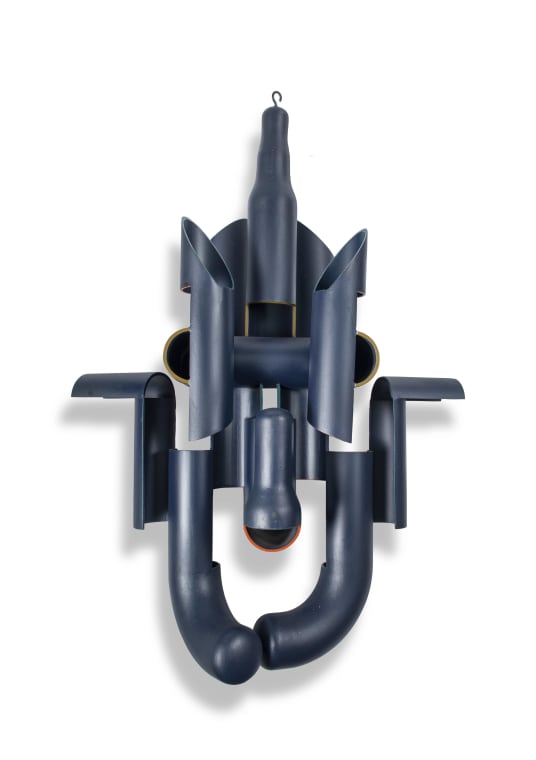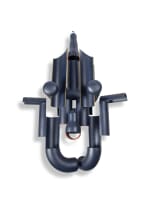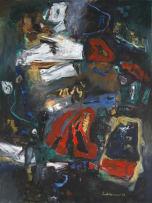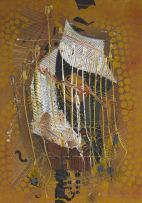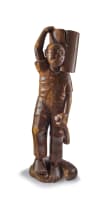Dr Matthys Johannes Strydom Family Collection, Evening Sale
Live Virtual Auction, 22 November 2022
Dr Matthys Johannes Strydom Family Collection Live Auction
About the SessionMatthys Strydom was a true connoisseur of South African art. As director of the well-known Strydom Gallery in George for more than 30 years, he was responsible for the selection of a wide variety of prime art works from all over the country for the annual exhibitions. The Dr Matthys Johannes Strydom Family Collection offered by Strauss & Co gives collectors and art lovers the chance to become part of this great selection from the art history of our country.
About this Item
incised with the artist's stamp and dated 1994
Notes
"Die meeste van sy staalskeppings is nié, soos baie mense dink, niefiguratief nie, maar geabstraheerde vorme van mens, dier en plant. Invloede van tradisionele Afrika-kuns is ook sigbaar, veral in sy reeks van maskers soos die een."
"Most of his steel creations are not, as many people think, non-figurative, but abstract forms of man, animal and plant. Influences from traditional African art are also visible, especially in his series of masks like this one." -Dr Matthys J Strydom, 2016.
Born in 1915 in Bergamo - Italy, Edoardo Villa lived his early years under the fascist regime of Benito Mussolini. Conscripted for two years into the Italian army at the outbreak of the Second World War, Villa was uprooted from his native land to fight in the North African campaign where he was wounded and captured by the British army.1 In 1942, the then twenty-seven-year-old was sent to Zonderwater, a prisoner-of-war camp near Pretoria, South Africa, where he spent the next seven years reconnecting with his sculptural practice in the cultural facilities administrated by the Camp Welfare Department.2 Although not deliberately expatriated from his homeland, once freed from his imprisonment, Villa decided to set his roots in South Africa, where he began a phenomenal, unprecedented artistic journey. Edoardo Villa, whose virtuosity had been limited by the cultural repression of fascist aesthetics and subsequently by his extensive incarceration, was eager to finally express his artistic persona in his adoptive land. Yet unsatisfied by the regional norms of descriptive realism, the artist adopted African sculptural forms and oriented his genius towards abstract tendencies inspired by the eastern world.
From his native Italy, Villa inherits deep humanism, a vibrant personality and a mastery of great design that complements the forms of his sculpture: this is particularly true when looking at the 1994 Hangende Vorm in Vier Kleure (Hanging Form in Four Colours). Inspired by his experience of war and captivity, as well as the modern architecture and industrialisation of Johannesburg, the artist distorts matter intersecting flat and curved panels. His experimentation of the welded and bent material creates a definite sharp design that engages quite subtly with the hollows and the lightness of the suspended work creating a poignant combination of forms in space.
1. Esmé Berman, Alan Crump, Vittorino, Karen Nel, Monty Sack, Karin Skawran and Amalie von Maltitz (2005) Villa at 90: His Life, Work and Influence, Johannesburg: Jonathan Ball Publishing and Shelf Publishing, page 2.
2. Ibid
Provenance
Dr Matthys Johannes Strydom Family Collection.
Literature
Matthys Strydom (2016) Stories Teen My Muur, Eversdal: Matthys Strydom, illustrated in colour on page 230.
